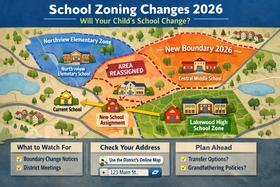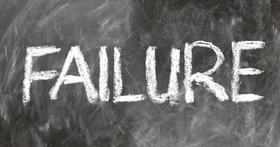STEM education, the teaching of science, technology, engineering, and mathematics subjects, is an essential component to preparing the workforce of the future. However, it appears schools across the country are failing to answer that call. Few primary and secondary schools are offering courses in these subjects that directly apply to the workforce needs of today, and even where courses are available, they are still not considered part of the core curriculum. The good news is that as gurus in these industries begin to sit up and take notice of the gap in our education system, some schools are also rising up in an effort to bring STEM studies to public education.
STEM is not widely embraced by the public education system in the U.S. currently. According to a U.S. News and World Report report, only 2,100 high schools out of 42,000 currently offer the Advanced Placement test in computer science. This number is actually down 25 percent over the past five years. In addition, few states allow computer science to be taken to meet a math or science requirement. Only nine states allow computer science to be used as a core class that goes toward meeting graduation requirements.
“It will get you just as close to graduation as it will if you take woodworking,” Brad Smith, executive vice president of legal and corporate affairs at Microsoft, told U.S. News and World Report. “I love wood, but it’s not the future of our economy,” Smith added.
This video suggests some innovative techniques for teaching STEM.
STEM Solutions 2012
One year ago, U.S. News and World Report decided to tackle the STEM issue head-on by establishing STEM Solutions 2012. The project was designed to look at why there are so many unfilled jobs in this country at a time when unemployment is at a record high. As researchers began digging, one fact became apparent – lack of training for in-demand fields was contributing to the disconnect between unemployment and job openings. The project, which involved more than 1,600 people involved in education or STEM industries, made the following conclusions:
- STEM education isn’t improving; in fact, it may be getting worse.
- Math is the single most important subject for students today, yet there is a shortage of qualified math teachers.
- Hands-on learning linking math and science to the real world is necessary for STEM to thrive.
- Women and minorities are less likely to pursue a STEM education.
- Parents need to get behind the STEM movement and encourage their children to pursue studies in these areas.
- STEM is as much an employment issue as an education issue – some even consider it a national security issue.
With so much emphasis being placed on STEM in the professional world, why isn’t that focus trickling down to public schools? The answer to that question is multifaceted, but by addressing each of the issues prohibiting more widespread STEM education, the U.S. may be able to get on top of the STEM problem currently facing the country. The good news is that many schools are doing just that, as well as partnering with businesses and industries that can help ensure students get the education necessary to impact the future of this country positively.
This video explains STEM.
STEM Comes to Baltimore City Schools
Baltimore students are learning the importance of STEM education through hands-on training provided by Johns Hopkins University. Thanks to a five-year, $7.4 million grant from the National Science Foundation, the new program known as STEM Achievement provides training in these subjects for as many as 1,600 students in grades three through five throughout Baltimore. Faculty from participating schools will receive training and resources directly from the university to provide their students with a broad STEM education that will translate directly to real-world experiences.
“With this partnership, Johns Hopkins welcomes another opportunity to build on our collaborations with Baltimore City Public Schools to enhance the opportunity for students to excel in science, technology, engineering and mathematics education,” Johns Hopkins president Ronald J. Daniels told the university’s Gazette.
Midwestern Areas See STEM as Job Maker
In one rural Ohio high school, the Huffington Post reports that STEM education broadens students' education and expands their career potential. Through studies that take students from the classroom to real-world experiences, students begin to see job opportunities open up in their rural communities.
Milwaukee, a town once known for its thriving manufacturing industry, is now using STEM education in its schools to expand employment opportunities in the area. Students are shifting focus from manufacturing to urban gardening, setting up hydroponic growing centers that teach them how to raise food in the middle of a bustling city. Teachers connect with scientists in their areas to help students see their studies' practical applications.
Microsoft Encourages Young Techies
Computer science, a booming field with numerous employment opportunities, is getting a boost in schools across the country, thanks to Microsoft. The New York Times reports that this tech conglomerate is partnering with local schools to bring computer science to life by bringing Microsoft employees into the classroom. The company is sending employees to teach courses for a full year to hook college students into a computer career after graduation.
Few would argue that STEM education is indeed the wave of the future, but getting that message into the public school system has been easier said than done. Fortunately, examples of successful STEM integration are now in place, providing an example and encouraging other schools to meet the STEM challenge head-on.
Questions? Contact us on Facebook. @publicschoolreview











